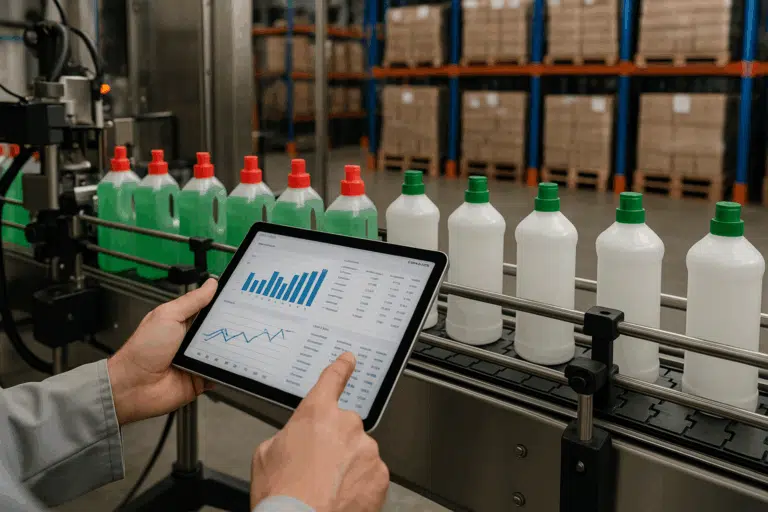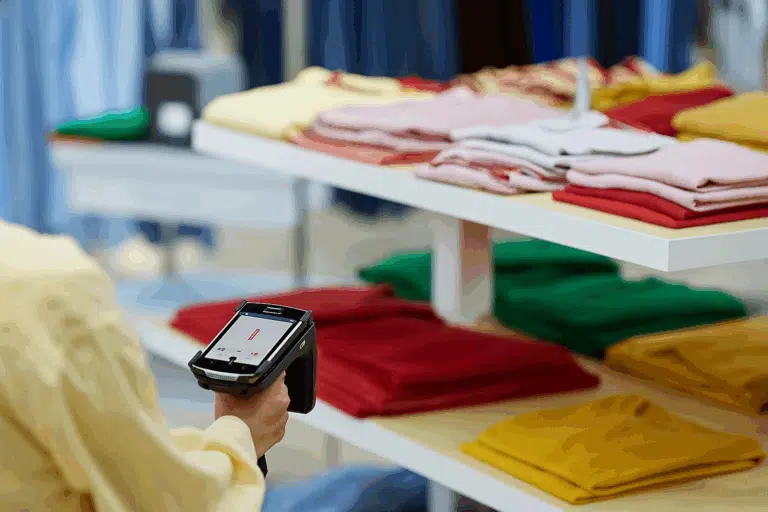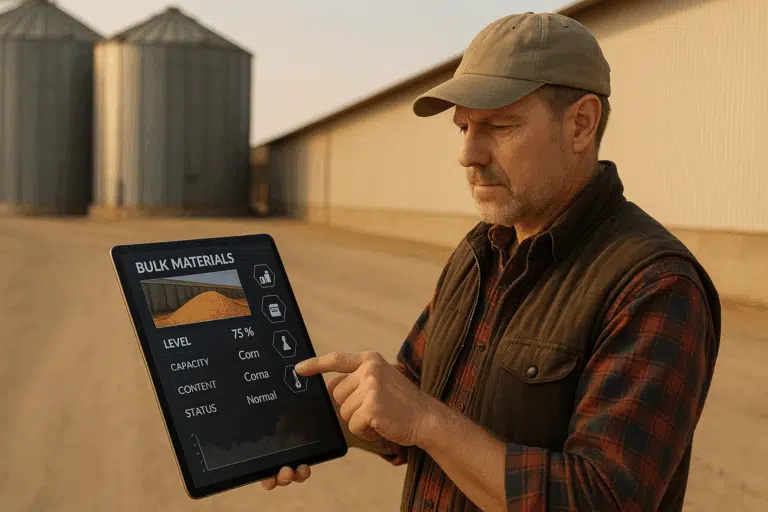In 2024, the European Union (EU) implemented a regulation that will change the way we think about products and their impact on the environment. The Digital Product Passport (DPP) is set to become a mandatory requirement for almost all products sold in the EU. This initiative, which is part of the Ecodesign Regulation for Sustainable Products, aims to increase transparency in product value chains by providing detailed information about a product’s origin, materials, environmental impact and disposal recommendations. At the heart of this transformation is the RFID chip, a technology that plays a crucial role in making this vision a reality.
In this article, we’ll explore what the Digital Product Passport is, how RFID chips work and why this combination is essential to creating a more sustainable and transparent future.
Table of Contents
ToggleWhat Is a Digital Product Passport?
The Digital Product Passport (DPP) is a digital record that contains comprehensive information about a product’s lifecycle. Think of it as a “birth certificate” for products, detailing everything from where and how they were made to their environmental footprint and how they should be recycled or disposed of. The DPP was created to address the growing demand from consumers for more transparency and to bridge the gap between this demand and the current lack of reliable product data.
The DPP will include key details such as:
- Origin of materials (Where and how was it produced?)
- Sustainability credentials (Carbon footprint, recyclability, energy efficiency)
- Compliance data (Regulatory approvals, safety standards)
- End-of-life disposal recommendations (Recycling, reuse, waste management)
This information will be accessible to consumers and regulators, facilitating informed decision-making and ensuring that companies comply with sustainability regulations.
How Does the RFID Chip Fit into This?
The RFID (Radio-Frequency Identification) chip is a small electronic device that can store and transmit data wirelessly. It consists of a microchip and an antenna, and it can be embedded in product tags, labels, or even the product itself. When an RFID reader scans the chip, it can instantly retrieve the data stored on it.
In the context of the Digital Product Passport, RFID chips serve as the physical link between the product and its digital record. Here’s how they work together:
- Unique Identification: Each RFID chip contains a unique identifier that links the physical product to its DPP. This ensures that every product can be tracked and identified throughout its lifecycle.
- Real-Time Tracking: RFID technology enables real-time tracking of products as they move through the supply chain. This helps companies monitor logistics, reduce waste, and ensure compliance with regulations.
- Consumer Access: Consumers can use their smartphones or RFID readers to scan the chip and access the product’s DPP. This provides instant access to information about the product’s origin, materials, and environmental impact.
Why Are the Digital Product Passport and RFID Chip Essential?
Transparency for Consumers
Today’s consumers are more environmentally conscious than ever. They want to know where their products come from, how they were made, and what impact they have on the planet. The DPP, powered by RFID chips, provides this information in a clear and accessible way. For example:
- A shopper buying a sustainable fashion item can scan the RFID tag to see if the cotton used is organic, where it was grown, and how the product should be recycled.
- A consumer purchasing electronics can check the DPP to ensure that the materials used in the device are conflict-free and that the product can be recycled responsibly.
Compliance for Businesses
The new EU regulations will require businesses to provide detailed information about their products. RFID chips make it easier for companies to comply with these requirements by automating data collection and ensuring accuracy. For example:
- A fashion brand can use RFID tags to track the journey of a garment from the factory to the store, ensuring that all materials meet sustainability standards.
- An electronics manufacturer can use RFID technology to monitor the sourcing of components and ensure compliance with environmental regulations.
Sustainability Across the Supply Chain
The combination of the DPP and RFID chips promotes sustainability at every stage of a product’s lifecycle. For example:
- Logistics: Real-time tracking with RFID reduces waste and inefficiencies in the supply chain.
- Recycling: The DPP provides clear instructions for recycling or reusing products, reducing the amount of waste that ends up in landfills.
- Accountability: Companies can use the data collected through RFID chips to improve their sustainability practices and demonstrate their commitment to transparency.
Practical Examples of the Digital Product Passport and RFID Chip in Action
Sustainable Fashion
Imagine buying a pair of jeans with an RFID tag embedded in the label. When you scan the tag with your smartphone, you can access the DPP and see:
- The jeans were made with organic cotton from a farm in India.
- The dye used is non-toxic and environmentally friendly.
- The jeans can be recycled at a specific facility, reducing their environmental impact.
Electronics
When purchasing a smartphone, the RFID chip in the packaging could provide access to the DPP, revealing:
- The phone’s battery is made from responsibly sourced materials.
- The device was assembled in a carbon-neutral factory.
- The phone can be returned to the manufacturer for recycling at the end of its life.
Food and Beverages
A package of coffee with an RFID tag could show:
- The coffee beans were grown on a fair-trade farm in Colombia.
- The packaging is compostable and can be disposed of in an eco-friendly way.
- The carbon footprint of the product is 50% lower than the industry average.
The Future of Transparency and Sustainability
The Digital Product Passport and RFID chip represent a significant step forward in creating a more transparent and sustainable economy. By providing consumers with access to reliable information and enabling businesses to track and improve their practices, this combination has the potential to transform industries and drive positive change.
As the EU moves forward with the implementation of the DPP, businesses and consumers alike will need to adapt to this new standard. For businesses, this means investing in RFID technology and ensuring that their products meet the requirements of the DPP. For consumers, it means having the power to make informed choices and support companies that prioritize sustainability.
Conclusion
The Digital Product Passport and RFID chip are more than just compliance tools – they are essential components of a sustainable future. By promoting transparency, accountability and sustainability, they empower consumers, support businesses and protect the planet. Now, in 2025, it is even clearer that this combination will play a vital role in the way we produce, consume and think about products.
Are you ready to embrace the future of transparency? Contact us today to find out more about how your company can prepare for the Digital Product Passport and take advantage of RFID technology to stay ahead of the curve.
FAQ
What is a Digital Product Passport (DPP)?
A Digital Product Passport (DPP) is a digital record that provides comprehensive information about a product’s lifecycle, including its origin, materials, environmental impact, and disposal recommendations. It aims to increase transparency and help consumers make informed, sustainable choices.
How does an RFID chip work with the Digital Product Passport?
An RFID chip stores and transmits data wirelessly, linking a physical product to its Digital Product Passport. When scanned, it allows consumers and businesses to access real-time information about the product’s sustainability credentials and lifecycle.
Why is the Digital Product Passport important for consumers?
The DPP empowers consumers by providing transparent information about a product’s environmental impact, materials, and disposal methods. This helps them make eco-friendly purchasing decisions and hold companies accountable for their sustainability claims.
How can businesses benefit from using RFID chips and the DPP?
RFID chips help businesses comply with EU regulations by automating data collection and ensuring accuracy. They also improve supply chain efficiency, reduce waste, and enhance brand trust by demonstrating a commitment to sustainability.
What industries will be most affected by the Digital Product Passport?
Industries like fashion, electronics, and food and beverages will be significantly impacted, as they will need to provide detailed information about their products’ materials, sourcing, and environmental impact to comply with the new regulations.
Can the Digital Product Passport and RFID chips help reduce waste?
Yes, the DPP provides clear recycling and disposal instructions, while RFID chips enable real-time tracking and efficient logistics. Together, they help reduce waste by promoting recycling, reuse, and sustainable supply chain practices.






























